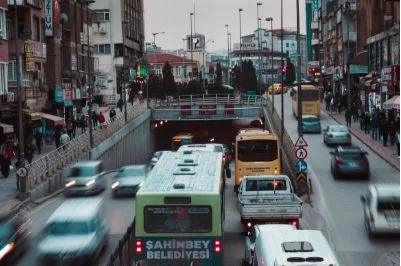Navigating the Essentials of Traffic Guidance Schemes for Safer Roads
Road safety is an imperative aspect of modern society, affecting the daily lives of people around the world. Maintaining order on the roads and ensuring the safe flow of vehicular and pedestrian traffic is no small feat. It involves comprehensive planning and the implementation of effective traffic guidance schemes. As populations grow and urban centres become increasingly congested, the importance of these schemes cannot be overstated. Here we discuss the key components of traffic guidance schemes and their role in promoting safer roads.
Understanding Traffic Guidance Schemes
Traffic guidance schemes refer to the systematic approach used in devising methods and deploying resources to manage traffic effectively. These schemes encapsulate a range of strategies designed to direct or regulate traffic flow on roads, construction sites, during public events, and in various other scenarios requiring structured traffic control. At the heart of such schemes is the goal to enhance safety for both road users and pedestrians, while minimising the risk of accidents and disruptions.
One of the key functions of a traffic guidance scheme is to facilitate roadworks and construction processes without compromising the safety and mobility of road users. Even minor disruptions can lead to extensive congestion, and in worst-case scenarios, lead to accidents or road rage incidents. By leveraging strategic planning and professional traffic management, these risks can be significantly reduced.
The Components of a Traffic Guidance Scheme
To be effective, a traffic guidance scheme must be comprehensive and detailed, tailored to the specific requirements of the area and the nature of the activity affecting normal traffic flow. The scheme should account for various components, including signs, signals, traffic devices, and the roles of personnel involved in managing the traffic.
Signage is vital for guiding drivers and is usually the most visible aspect of a traffic guidance scheme. It can include permanent signs that inform and warn drivers about standard road conditions as well as temporary signs indicating diversions, roadworks, or closures. This visual communication is indispensable to road safety, ensuring that drivers are aware of changing conditions ahead in time to react appropriately.
Planning for Different Scenarios
A traffic guidance scheme must be adaptable to a variety of scenarios, ranging from daily peak hour traffic to the challenges presented by large public events or natural disasters. Each scenario requires a different approach, and planning must be undertaken with care to ensure all eventualities are considered.
During large events, for example, the flow of both pedestrian and vehicular traffic increases substantially, requiring additional measures. Sufficient signage, temporary barriers, and even rerouting can all form part of the traffic management strategy to handle these unique demands. Similarly, natural disasters may require quick adaptation of existing traffic management plans to ensure emergency services have unimpeded access to affected areas.
The Role of Traffic Controllers
Traffic controllers play a crucial role in executing a traffic guidance scheme effectively. They are the personnel on the front lines, implementing the plan on the ground and making real-time judgements based on prevailing conditions. Their presence is not only reassuring to motorists and pedestrians but also crucial in maintaining order and responding rapidly to any emerging situations.
These individuals are highly trained and skilled in understanding traffic patterns and behaviours, allowing them to make informed decisions that uphold safety standards. Traffic controllers are also responsible for setting up, maintaining, and removing traffic management devices in accordance with the scheme in question.
Technology and Traffic Guidance
While traditional methods of traffic management remain essential, modern technology has begun to play an increasingly significant role in road safety management. Intelligent transport systems integrate technologies such as CCTV monitoring, variable message signs, and traffic sensors to provide a more responsive and efficient traffic guidance scheme. These technologies allow for the real-time assessment of traffic conditions, facilitating swift reactions to congestion, accidents, or changing weather conditions.
Moreover, the rise of smart cities has seen the integration of traffic management systems with various other urban services. Consequently, traffic guidance can now be coordinated with public transportation systems, emergency services, and even citywide event management to improve overall road safety and efficiency.
Designing Traffic Guidance Schemes
The design of a traffic guidance scheme is a complex process that requires expertise in traffic engineering and an in-depth understanding of local road networks. It is also influenced by a region’s legal framework and safety regulations, which determine the standards and practices that must be followed.
Effective traffic guidance schemes take into consideration factors such as road geometry, traffic volumes, vehicle types, speed limits, and pedestrian movements. Additionally, these plans must be flexible enough to be updated and amended as circumstances evolve – whether due to the long-term development of the area or in response to temporary disruptions.
Conclusion
At the intersection of engineering, planning, and human behaviour, traffic guidance schemes are a foundational element in the pursuit of safer roads. By mapping out effective management strategies, utilising both human expertise and technological advancements, these schemes promote a well-ordered road network that can adapt to everyday challenges as well as extraordinary events.
Implementing and following a well-conceived traffic guidance scheme is essential to reducing the likelihood of accidents, minimising congestion, and keeping both road users and pedestrians safe. As our roads become busier, the development and refinement of these schemes are not just beneficial but necessary for the sustenance of society’s dynamics and safety.
The essence of traffic guidance schemes lies in their focus on order and predictability, providing clarity and direction to all road users. With meticulous planning and execution, these schemes serve as the silent guardians of the road – guiding us towards not just our destinations, but towards the shared goal of safer travel for everyone.





